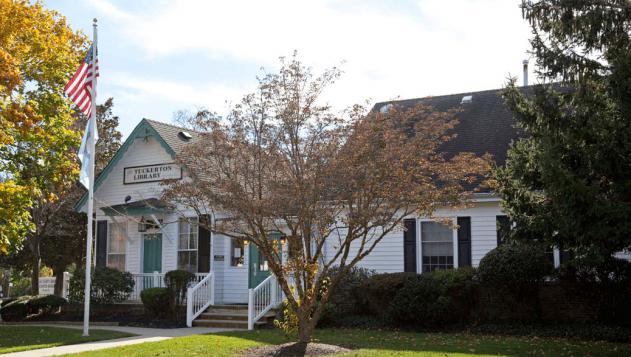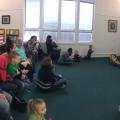Tuckerton is a small community at the southernmost tip of Ocean County. Fronted by tidal marshes and natural bays along the coast and backed by the Pine Barrens, the area has a rich and varied history. There is little known of the Paleolithic peoples who were probably the first residents. More archaeological research is needed. Of the later residents, the Lenape Indians, more is known. Mostly hunters and gatherers, they inhabited the shore on a more or less seasonal basis, surviving on fish and shellfish, cranberries, blueberries, and other native fruits, as well as by hunting. Artifacts have been found at one of the shell mounds near Tuckerton, as well as along riverbanks.
The first recorded visit by a European is that of Captain Cornelius Jacobsen Mey, who sailed into the harbor now known as Little Egg Harbor in 1614 to supplement the shipboard diet by gathering the eggs of shore birds. Over a period of many years, Europeans began to avail themselves of the natural harbors and abundant farmland. Settlers took advantage of both land and ocean resources, and the first villages began to appear: Parkertown, established in 1721; Little Egg Harbor, established in 1741; Tuckerton, established in 1798 (previously known as Clamtown); and Eagleswood, established in 1874. Tuckerton itself became an important port of entry. In the Revolutionary War, Tuckerton was a major harbor for captured British ships. The British attempted to take Tuckerton, but were repulsed by 300 men led by Count Pulaski. After the war, imports and exports became brisk business. Timber was felled for ship building, iron was retrieved from the bogs for smelting, a salt works was established, and agriculture became increasingly important. Cranberries, Indian corn, and rye were predominant crops, while fishing, clamming, and hunting continued to thrive. Extensive lumbering depleted the local hardwoods, however.
Early inhabitants were Quakers, but other Protestant groups soon immigrated. The area thrived as a seaport, but the construction of the Erie Canal in 1825 precipitated a decline. According to June LeMunyon, President of the Tuckerton Historical Society, it was after the Civil War that tourism became the new industry. From the 1870s through the 1930s, the area was known primarily for its proximity to seaside resorts.
Flooding and beach erosion diminished the area's importance somewhat. Tucker's Beach, also known as Sea Haven or Short Beach, was one of the earliest resorts on the Jersey Shore, and is now completely under water.
Just prior to World War I, the German government built the Tuckerton Wireless, a 680 feet tall tower with the capability of communicating directly with Europe. The tower was operated by German nationals until the entrance of the United States into the war. Local folklore maintains that the message "Get the Lucy" was broadcast from the tower, which resulted in the famous sinking of the Lusitania. The tower was dismantled in 1950.
Tuckerton, incorporated as a borough in 1901, was the commercial hub of the area. Route 9 brought many fishermen & day trippers to the area, but 1954 brought the completion of the Garden State Parkway, causing many tourists to bypass Tuckerton. A real estate boom in the 1950s brought new residents to the area, so many that a new school was needed in the 1970s, so Pinelands Regional High School was built in 1979. Also in the 1970s, the Tuckerton Historical Society was established in 1972. Also in 1979, a fire destroyed store buildings in the center of town, and also the Methodist Church. The Great Bay ecosystem was incorporated into the Jacques Cousteau National Estuarine Research Reserve, which covers more than 114,000 acres of public, in October, 1997. Research and education for the Mullica River/Great Bay Estuary are the main focus of the reserve. July 12, 1997 was the groundbreaking for the Tuckerton Seaport, which opened 13 of 26 buildings on May 6, 2000.





